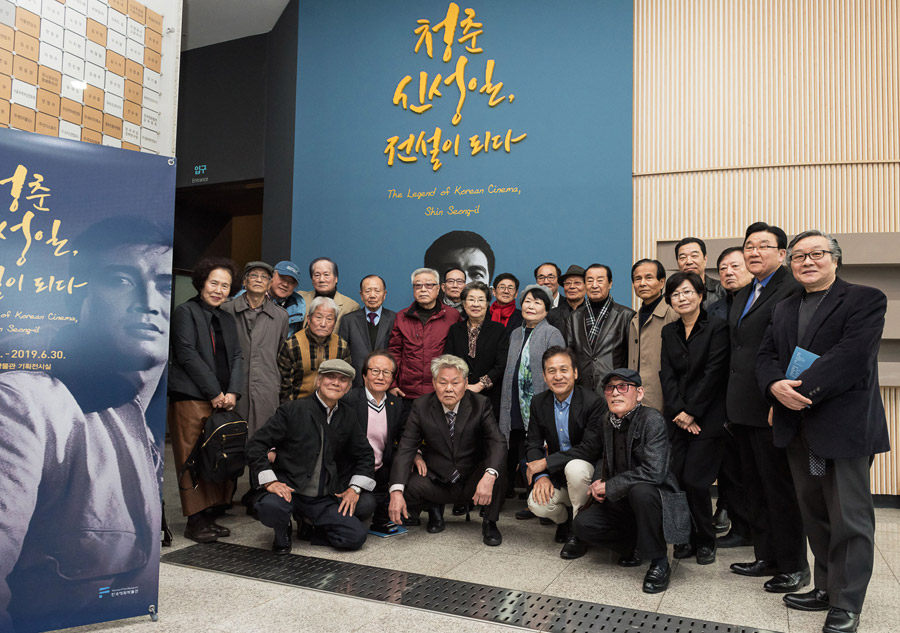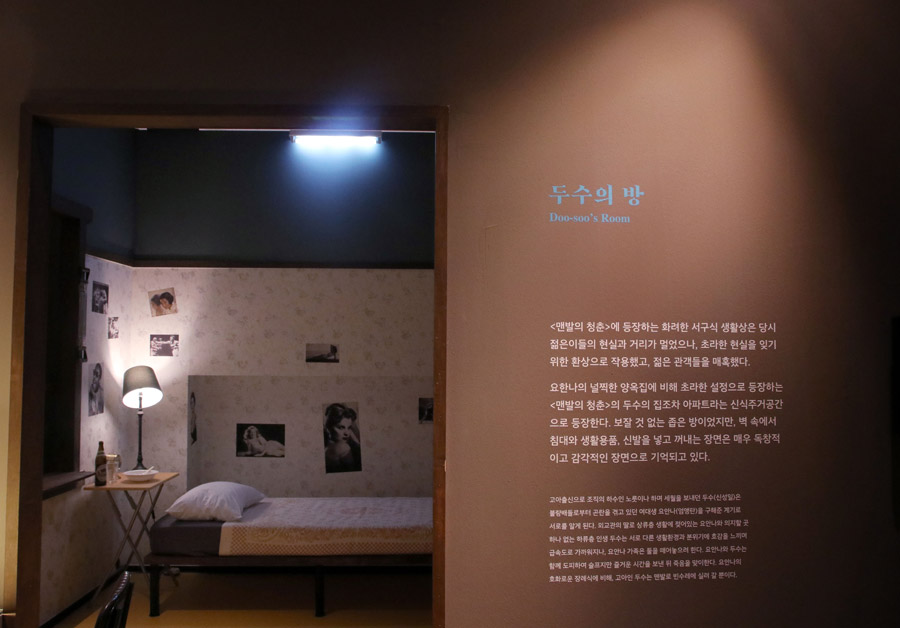Since his debut in Romantic Papa in 1960, Shin Seong-il appeared in 514 movies over 50 years and was the longest running top star of Korean cinema. Following his rise to stardom through youth films in the early sixties, he represented the youth who had a heightened sensitivity to the era, middle-aged men who felt helpless in the seventies, and the weary face of manhood crushed under the weight of history in the eighties. However, what is the reason that he is called the ‘eternal icon of youth’ despite his diverse character portrayals? This special program focuses specifically on the keyword ‘youth’ in Shin Seong-il’s world of cinema.
Shin Seong-il had a new age charm about him that set him apart from the existing actors and he had unrivalled good looks. However, it is impossible to understand the ‘star’ that he is without first understanding youth films of the sixties. He rose to stardom with Um Aing-ran through youth films, which established him as an unequalled star for a long time. It goes without saying that the youth film genre of the sixties would not have been possible without Shin Seong-il. He was indeed synonymous with the youth film genre of the sixties.
Through this exhibit, we plan to shed light on how Shin Seong-il became the icon of eternal youth in relation to youth films of the 1960s.
Curator Soyoun Cho


Director Shin Sang-ok came up with the stage name Shin Seong-il, which meant new star number one, for Gang Shin-yeong, who became an actor after passing the audition for Shin Films. Shin debuted with Romantic Papa (Shin Sang-ok, 1960) and then made a name for himself with Only for You (Yu Hyun-mok, 1963). He appeared alongside Um Aing-ran for the first time in Private Tutor (Kim Kee-duk), and the two rocketed to stardom through youth films. Then The Barefooted Young (Kim Kee-duk) cemented their status as the biggest stars. He not only appeared in 514 films over 50 years but was also the lead actor in a quarter of the Korean films produced over 11 years from 1964 to 1974, making him a legendary figure that runs through the history of Korean cinema in the 1970s.



Shin Seong-il and Um Aing-ran co-starring in Private Tutor (Kim Kee-duk, 1963) gave birth to the terms ‘star system’ and ‘combi’ (meaning pairing). The Classroom of Youth (Ki Soo-yong, 1963) followed by The Barefooted Young (Kim Kee-duk, 1964) were both unprecedented hits and made Shin and Um a sure thing at the box office, making the ‘Shin Seong-il-Um Aing-ran duo’ the main symbol of youth films in the sixties.
Companies in other provinces and theater owners bought movies depending on the appearance of Shin Seong-il and Um Aing-ran, which led to a long succession of film productions featuring the two. It was a short period, but the hit producing system utilizing the star combination created by Shin Seong-il and Um Aing-ran was truly impressive. (They starred in 27 films together in 1964 and co-starred in a total of 58 films.)
Shin Seong-il and Um Aing-ran’s wedding in October, 1964 was the ‘wedding of the century’ and was a social spectacle. The couple who were most desirable beings both on and off screen were idolized by the public



The Barefooted Young was the biggest hit of the time, attracting 250,000 people to theaters in Seoul. It was the best youth film to be shown on the screen and drew into the theater a young audience, who had been watching only foreign films up to that point, and it was decisive factor in establishing Shin Seong-il’s unparalleled star status. Shin was dressed in jeans and a leather jacket with a rebellious look in his eyes which made him the icon of rebellious characters going head to head with the older generation.
This film was an adaptation of the Japanese film Dorodake no Junjo (1963), and it was criticized harshly for copying the original, but it is also greatly acknowledged as a film that captures the cultural experience and social despair resulting from the effects of western culture and social change on the younger generation in the most sensitive way.



Youth films refers to a genre that was popular from about 1963 to 1968. It was usually set in an urban space and revealed the admiration and yearning for western culture containing the despair and rage felt by the younger generation in defiance to the conventional patriarchal society, all melted onto the screen with a new sensibility. Director Kim Kee-duk’s Private Tutor (1963), which first opened the doors, followed by Director Kim Soo-yong’s The Classroom of Youth (1963), which was screened as the opening film for the opening of the Academy Theater and became a huge success, heralded the beginning of the golden era for youth films. Then came The Barefooted Young (1964) which was the pinnacle of youth films, making it a successful genre.
The combination of ‘Director Kim Kee-duk-Shin Seong-il and Um Aing-ran’ worked as a formula for box office success, while Shin Seong-il became a synonym for youth films.

When Um Aing-ran retired after getting married, Moon Hee (debuted with Heukmaek in 1965), Nam Jeong-im (debuted with Affection in 1966), and Yoon Jeong-hee (debuted with Sorrowful Youth in 1967), called the Troika, and Ko Eun-ah became the leading actresses for youth films. Kim Ji-mee was still a star but the rapid rise of new actresses like Moon Hee, Yoon Jeong-hee and Nam Jeong-im led the boom of youth films and Korean cinema in the sixties. It was ironic, however, that despite there being numerous actresses, the leading man in youth films was played by Shin Seong-il only.

The fashion in youth films of the sixties gave birth to ‘stars’ which contributed to the boom of youth films and made fashion an important part of cinema and modern culture as well.
Shin Seong-il was, without a doubt, the fashion icon for men in the sixties. The ‘bomber jacket’ that Jo Doo-soo wore in The Barefooted Youth and his half-clean cut hair style became a symbol of youth. When the biggest stars of the times like Um Aing-ran, Moon Hee or Kim Ji-mee got a script, they would go to a fashion designer like Nora Noh. Boutiques sprouted up around the Myeongdong area and cinema and fashion went hand in hand as they opened the gates to a golden era.


The dreamy, fancy lifestyles and culture depicted in youth films reflected the mindset of the shabby youth who wanted to at least forget about their reality and enjoy the fantasy, so the these films became the x-x-x-objects of admiration and desire.
The space of a dance hall in youth films was often used to reveal the desires and setbacks, the anguish and concerns of the actor Shin Seong-il. The captivating look of solitude in his eyes and face where passion that seemed to have flamed up from deep within the heart appeared frozen cold was truly the symbol of youth.


